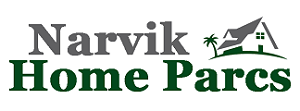How Termites Threaten MRT Tunnels & Infrastructure

Urban areas in Singapore depend heavily on its underground MRT tunnels, flyovers, and utility networks to keep the city moving. While most threats to these systems are associated with engineering or mechanical failures, there is an overlooked biological risk: termites in Singapore. These pests are not only a nuisance in residential homes but also a potential hazard for large-scale infrastructure projects. The long-term stability of critical assets could be compromised without effective pest control in the city-state.
Termite Behaviour in an Urban Context
Termites thrive in the city-state’s humid, tropical climate. Their colonies expand quickly underground, often out of sight until damage is extensive. For homes, the danger usually lies in wooden frameworks or furniture. However, in public infrastructure, termites pose risks by targeting structural timber, joint seals, and even electrical insulation that runs through underground spaces. Once termites weaken these secondary elements, the surrounding structure may face indirect but serious vulnerabilities. The challenge is amplified by the scale and complexity of public projects, where termite activity can go undetected for years.
Vulnerability of MRT Tunnels
Although MRT tunnels are largely made of reinforced concrete and steel, they still contain numerous components that termites find attractive. Timber is often used in temporary formwork during construction, and traces of this may remain embedded in the structure. Termites are also drawn to damp conditions and organic matter found in backfill soils. Underground utility lines and protective layers, such as cable jackets made from cellulose-based materials, can become targets. Continuous exposure to such infestations may not collapse tunnels outright, but they can create micro-weaknesses that evolve into costly maintenance issues over time.
Risks to Other Public Infrastructure
Termites are not confined to transit systems. Bridges, flyovers, drainage systems, and even public housing foundations have all reported cases where termites were found within nearby soil or support structures. Once they compromise wooden expansion joints or protective coatings, small failures can escalate. Electrical substations and communication lines also face risk, as termites chew through wiring insulation. The disruption of power or data networks can have serious consequences for a city that depends on uninterrupted connectivity.
The Role of Pest Control
The key defence against such risks lies in comprehensive pest control in Singapore that goes beyond residential and commercial buildings. Pest control professionals must integrate inspection protocols into the maintenance cycle of tunnels and transport systems. Non-intrusive monitoring technologies, such as underground baiting systems and sensor-based detection, are increasingly being considered. Preventive soil treatments before and after construction also play a role in minimising long-term risks. What is critical is early intervention, as termite damage is notoriously expensive to reverse once established.
The Financial and Safety Implications
Failure to address termite threats can lead to more than structural inconvenience. Repairing underground systems often requires disruptive excavation and significant downtime. Meanwhile, for public transport, this translates into service delays, financial losses, and public dissatisfaction. Weakened components, in the worst-case scenario, could contribute to safety risks for commuters and workers. This instance is why governments, contractors, and pest specialists need to treat termite control as a necessary part of infrastructure management rather than an afterthought.
Conclusion
While not the most visible threat to the region’s public infrastructure, termites in Singapore have the potential to undermine the safety and reliability of underground MRT tunnels and related systems. Their presence in the soil and their ability to attack hidden structural elements make them a unique challenge. The solution lies in proactive, large-scale pest control, involving advanced detection methods and long-term preventive strategies. The cost of neglect, without such measures, could far outweigh the investment in protection.
Contact Rentokil to learn how our termite management solutions can prevent costly structural risks before they surface.

